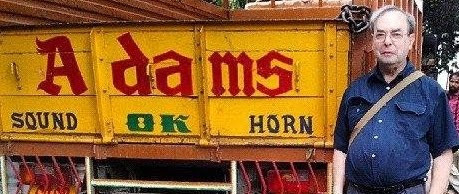I
first visited the south Indian city of Bangalore, now called ‘Bengaluru’, in
January 1994. About 30 years before that, one of London’s first ‘minicab’
companies, Meadway Cars, began carrying customers all over London. The minicabs
were the first new addition to the existing modes of public carriage in London
for many years. Prior to their introduction, the public could travel by bus, tube
train, or in black taxis (‘Hackney Cabs’) – trams and trolleybuses had been
phased out by 1964.
The
options for public carriage in Bangalore in 1994 were: busses (often looking
very battered), auto-rickshaws (three-wheeler ‘autos’), and private hire cars. The
latter were operated by smallish private firms, and could be hired in advance for
varying lengths of time and distance: for example for 4 hours and 60 Km; they were
not metered. These cars were in general unmarked.
Gradually
taxi companies such as ‘Easy Cabs’ hit the city’s crowded thoroughfares. Generally,
they were uncomfortable Maruti vans, but they were metered. Unlike autos, they
could not be hailed from the street; they had to be ordered by telephone.
The
21st century has seen not only the construction - albeit exceedingly
slowly - of a metro system in Bangalore, but also the introduction of two new
kinds of four-wheeler taxi. One of these is the so-called ‘Airport Taxis’
operated by companies such as Meru and KSTDC, and the other is the ‘computerised’
taxis such as are operated by the international company Uber, and the Indian
company Ola. All of these new cabs may be ordered using ‘applications’ downloaded
onto ‘smartphones’, and there the problems begin.
Before
going any further, I must emphasise that I have not encountered any problems ordering
Meru Taxis (by telephone.) However, this cannot be said of Ola and Uber, which
I have attempted to order using their slick ‘apps’. On opening the Ola or Uber ‘app’,
a GPS mechanism attempts to locate the potential passenger, and then displays a
map showing where the nearest Uber or Ola vehicles are located, and also how
long it is likely for each cab to reach the customer. Sadly, this is where
things begin to go wrong. A cab which might be stated as being 5 minutes away
might take as long as 30 minutes to reach you, or may not reach you at all!
This is either because the GPS has not located the passenger accurately enough
or because - and this is most likely - the driver is unable to comprehend the
workings of the GPS system, or both. Whilst driver and passenger are attempting
to meet, the former makes innumerable ‘phone calls to the latter, often adding
to the confusion and frustration of the passenger.
If
and when the cab (Ola or Uber) eventually arrives, the passenger should not
begin to relax. Despite the fact that the cabs are fitted with devices to enable
the driver to navigate from A to B, some drivers seem unable to benefit from them.
And, as many of the drivers we encountered seemed to be ignorant of Bangalore’s
geography, what should have been a relaxing trip becomes stressful because the passenger
needs to navigate and issue instructions to the driver. So far, I have yet to
be impressed by Ola and Uber. For long distances, I would recommend the
slightly more expensive Meru cabs. For journeys within Bangalore, there is no
substitute for the somewhat uncomfortable, yet remarkably nippy autos. On the
whole, the auto drivers know their way around Bangalore, and if they don’t they
sidle up to another auto and make enquiries.
It
might be early days for Ola and Uber in Bangalore and that with the passage of
time, they will live up to the optimistic expectations of so many Bangaloreans
and others who have begun to make use of them and are currently putting up with
their defects.
Visit
to read more by Adam Yamey





Thank you for sharing these valuable thoughts. I appreciate your writing. This blog provides you with a brief insight into the feature difference between Ola and Uber apps to get started for the taxi business. You truly have shared relevant and extraordinary knowledge. I hope you will continuously share more information. Keep writing, Features & Revenue Model of Ola and Uber.
ReplyDelete